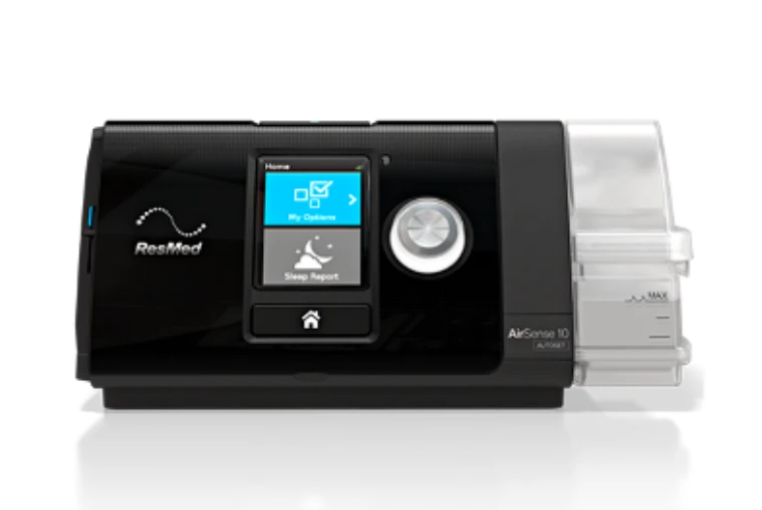
Sleep Apnea Machine Guide: Everything You Need To Know About CPAP Pressure Settings
Sleep Apnea Machine Guide 101: What Are CPAP Pressure Settings?
We already know that CPAP therapy makes a world of difference to those with Sleep Apnea that are looking to improve their quality of sleep. Understanding the benefits of this form of therapy is one thing but understanding the machine that makes it possible is another.
Many CPAP machine users often don’t fully understand why their machine is set up in certain ways especially when it comes to CPAP pressure settings. That is why we are putting together this Sleep Apnea machine guide to help you feel more confident in all aspects of your CPAP machine.
Firstly, let’s get an understanding of what a CPAP pressure setting is. Whether you see the pressure on your prescription or heard your sleep specialist speaking about it, pressure settings refer to the amount of airway pressure that is being passed through your mask. All CPAP machines deliver a specific fixed amount of pressurized air to prevent the soft tissue from collapsing and blocking your airway each night.
CPAP pressure settings are measured in centimetres of water pressure (abbreviated as cm of H2O). Most CPAP machines will have a pressure setting of between 4 cm and 20 cm H2O, with 4 cm H2O considered on the lower range side and 20cm H20 on the higher. However, most Sleep Apnea patients often require a pressure setting of between 6 and 14 cm H2O.
How Are CPAP Pressure Settings Determined?
You can only achieve restful sleep once your pressure settings are accurate. But how exactly are these settings determined? Your sleep specialist will assess what pressure settings you need based on the results of a sleep study as well as the type of machine you are recommended to use.
This sleep or titration study measures your apnea-hypopnea index (AHI), which refers to the total number of apnea events that you have each night. During the study, a polysomnography technologist observes your breathing patterns and adjusts pressure settings while you sleep. The aim of the study is to find a pressure setting that eliminates Sleep Apnea and snoring while allowing you to observe deep sleep.
While the severity of your OSA and the machine you are recommended to use will play a role in deciding which CPAP pressure setting will be prescribed for you, there are a number of factors which are taken into consideration including:
- Nasal obstruction
- Medication
- Sleeping position
- Obesity
It is important to note that your pressure setting needs may change over time. If you begin to notice signs such as snoring or waking up gasping for breath, then you will need to discuss with your sleep specialist.
Different CPAP Comfort Settings And Features: Which To Know
Oftentimes, CPAP users find it difficult to get used to the pressure settings of their machines. While it’s vital to speak your sleep specialist if you feel that your pressure is either too low or too high, there are comfort features and settings that ease any teething issues when getting used to CPAP therapy.
CPAP Ramp
One CPAP machine challenge you may encounter is exhaling against the delivery of continuous positive airway pressure.
The CPAP Ramp feature ensures that this doesn’t become an obstacle to therapy. How does it do this? Instead of receiving the full pressure setting from the beginning, this feature acts as a ramp that delivers a lower amount of pressure while you are trying to fall asleep and then gradually increases the pressurized air you receive over a 45 minute period. Therefore, allowing you to fall asleep easier and more comfortably.
EPR
Expiratory pressure relief (EPR) is a feature that is aimed at alleviating the feelings of breathlessness that some CPAP users may experience.
EPR features settings that allow Sleep Apnea patients to easily switch between three different pressure point settings while exhaling for their own comfort. For example, if your CPAP setting is usually set to 8 and you set the EPR pressure point to 3, your machine will automatically reduce the pressure to 5.
C-Flex
Similar to EPR, C-Flex has the same end goal of allowing those with Obstructive Sleep Apnea (OSA) to stay compliant with CPAP therapy by easing pressure levels. C-Flex Technology is a feature that reduces airway pressure on exhalation and then increases it before inhalation. This makes sure that Sleep Apnea patients don’t have to work as hard to breathe against the machine’s normal pressure level.
This technology is constantly changing and being improved upon by makers of Sleep Apnea machines. Some other terms for this feature include A-Flex, Bi-Flex and C-Flex+.
Auto-Start
This feature is quite self-explanatory. Auto-start gives your machine the ability to automatically deliver air pressure from the moment that you put on your CPAP mask. By delivering the pressure level immediately, it gives CPAP users the chance to get comfortable in bed before turning on their machine.
This eliminates any hassle or struggles that come with moving hoses and straps out the way while settling yourself in the perfect sleeping position. Essentially, it sets you up for immediate therapy compliance and a more restful, relaxed night of sleep.
Understanding Your Sleep Apnea Machine Better
While in some cases we might be happy to just press the ON button and trust that the respective device will do its job, there are benefits to understanding your CPAP machine better. Not only will it allow you to know why and how your machine is set up. But, it may also help you to understand when settings are wrong.
Feel like your CPAP pressure level is too high? Read our troubleshooting guide on what to do about high CPAP pressure. Interested in hearing more about the CPAP pressure setting you are using? Reach out to our experts today. We’ll be more than happy to answer your questions.

Leave a comment